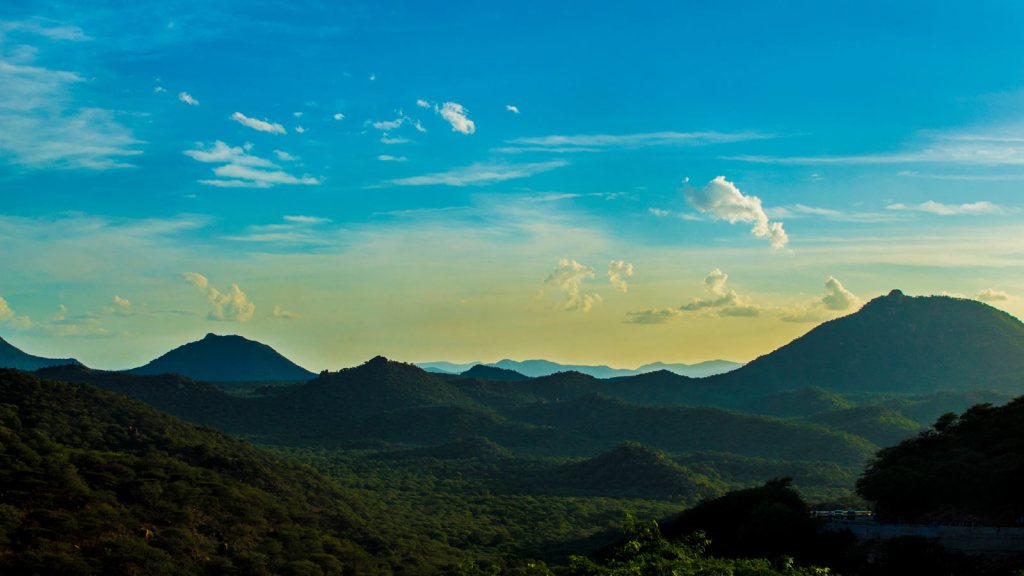The latest natural-turned-man-made disaster in Uttarakhand highlights the need to integrate ecological solutions into broader infrastructure planning. Climate change adaptation must be embedded within policy frameworks, writes Banasree Purkayastha
l Why Uttarkashi is in the news
ON TUESDAY, A cloudburst in the upper catchment of the Kheer Ganga river is believed to have triggered flash floods in Dharali village of Uttarkashi district, Uttarakhand. Dharali is the main stopover on the way to Gangotri, from where the Ganga originates, and is home to several hotels and homestays. The flash floods, carrying debris from the mountains, left at least four dead and many more missing as it wiped out the village’s market, houses, and hotels in just 34 seconds. Besides Dharali, cloudbursts were also reported in Harsil and Sukki Top in the same district.
Though some experts believe the amount of rain the Uttarkashi district received on Tuesday was not enough for it to be termed a “cloudburst”, and a glacier pond burst on the upper reaches was perhaps behind the flash floods, the wave of silt and the disaster that followed were certainly man-made.
The state has been witnessing heavy monsoon-triggered disruptions, especially in its higher-altitude regions, prompting large-scale evacuation and relief operations led by multiple agencies. Experts say these natural factors are worsened by human activity.
l Increased human activity compounds risk
DHARALI IS LOCATED in the fragile Bhagirathi eco-sensitive zone (BESZ), and unregulated activities like construction on river floodplains along with deforestation contributed to making the disaster more severe. While the ESZ tag offers a safety net against unregulated development, the region has been in the spotlight due to the construction of the Char Dham all-weather highway project, which faced legal challenges due to ecological threats, and was cleared by the Supreme Court.
Ravi Chopra, who headed a Supreme Court-appointed high-powered committee which appraised the Char Dham project in-depth, told The Indian Express, “On the stretch from Dharasu to Gangotri, the headquarters of Bhatwari block is located. The slope here has been sliding away over a period of time, and scientists have studied and published papers on this. We had said the road widening was not recommended and advised (the authorities) not to touch it.”
l Weather extremities on the rise
A STUDY PUBLISHED in the Journal of the Geological Society of India last month has confirmed a rise in extreme rainfall and surface runoff events in Uttarakhand after 2010. While 1998-2009 saw warming and low rainfall, the trend reversed post-2010, with central and western Uttarakhand witnessing more extreme precipitation events. The state’s geology compounds its risk.
A November 2023 study published in the Natural Hazards journal, analysing disaster data between 2020 and 2023, recorded 183 incidents in Uttarakhand during the monsoon months. Landslides accounted for 34.4% of these, flash floods 26.5% and cloudbursts 14%.
The Centre for Science and Environment’s Atlas on Weather Disasters shows that between January 2022 and March 2025, the 13 Himalayan states and Union territories reported extreme weather events on 822 days, claiming 2,863 lives.
l Himachal too faces nature’s fury
IN NEIGHBOURING HIMACHAL Pradesh also, rain-related incidents have left 173 people dead this year. In Kullu’s Parvati Valley, heavy rains and flash floods led to the collapse of a temporary cofferdam at the Malana-I hydroelectric project last week. Damages worth `9,000 crore due to higher silt flow and debris were recorded between 2022 and 2025, as per government estimates.
Climate change, deforestation, hydropower projects causing landslides, construction of four-lane roads, tunnels and multi-storey buildings to cater to the increasing tourist footfall are among the reasons behind the ecological imbalance, leading the Supreme Court recently to lament that “the day is not far when the entire state of Himachal Pradesh may vanish.” “The danger to the state’s natural richness is growing as a result of human greed and apathy,” the SC bench said. Calling for sustainable planning and conservation measures, it said all Himalayan states need to collate resources and expertise to ensure their development plans are cognisant of environmental challenges.
l Call for calibrated development
EXPERTS SAY IT’S time to take a relook at the Char Dham project, particularly its Gangotri stretch. As Mallika Bhanot, a member of the BESZ monitoring committee from Ganga Ahvaan, a non-profit organisation, said on X, “This is a natural event turned into a disaster which is due to man-made reasons. Unregulated construction along the sides of small tributaries and rivers leads to devastation downstream.”
The Uttarakhand government has commissioned assessments of the carrying capacity — the maximum number of individuals an ecosystem can sustainably support without degrading natural resources — of its cities to check ecological imbalances. The state attracts streams of tourists to its hill stations and shrines, with 3.7 million visiting these shrines in the summer of 2025. While tourism will remain the mainstay, a calibrated approach to tourism development, akin to how Bhutan does it, should be considered. At the same time, the need to identify alternative income-generating avenues for local residents cannot be ignored.


